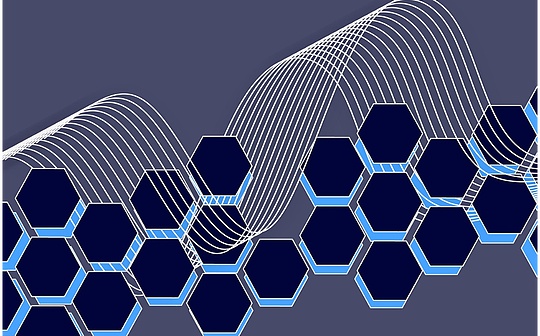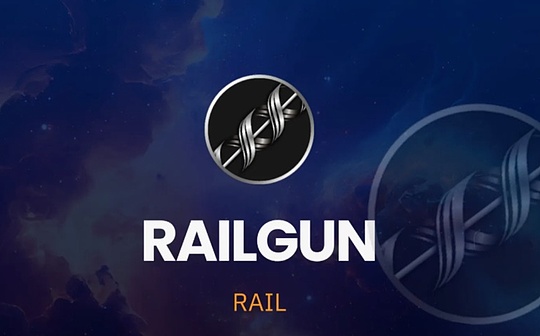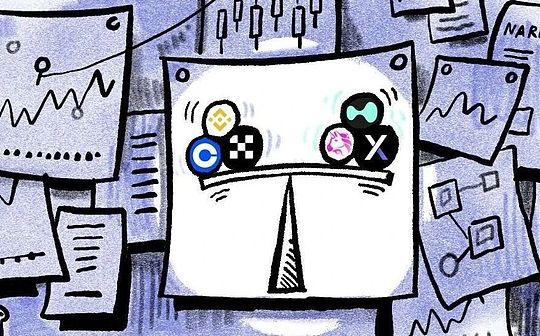
Author: PEDRO Source: Modular Media Translation: Shan Ouba, Bitchain Vision
In the past few weeks, we have gradually explored the components of the chain drawing layer, focusing on analyzing the permissions layer and solving layer.The permissions layer is an interface for users to interact with it, and users can express specific intentions through a unified balance (that is, the results they want).The solution layer is composed of senior participants outside the chain. Their responsibilities are to implement these user intentions as efficient as possible.
We need to remember that the solution will be an entity representing the transaction of ending users on the blockchain.Because the goal of chain abstraction is that there is no difference between the user experience and the use of traditional web2 applications. In other words, users should not realize that they are interacting with the blockchain.
In the previous article, we explained that the solution usually uses their own mobile funds to pay for users, thereby speeding up the execution speed.Now let’s review this process through an example:
-
Suppose Alice wants to receive 100 USDC from the Polygon chain bridge to the Base Chain.
-
In order to complete the intent of Alice as much as possible, the solution Bob competes with other solving people to compete for the task.
-
Bob used his funds on the Base Chain to pay 100 USDC directly for Alice because he held liquidity funds on multiple chains.
At this time, Alice has obtained 100 USDC on the Base Chain and can be used immediately, but Bob’s 100 USDC is left on the Polygon chain.This produces the so -called “re -balance of funds”.
Re -balance issue
After completing the order, the challenge faced by the solution is how to re -balance its funds to the chain required for its operation.At present, they rely on the centralized exchange (CEX) and cross -chain bridges to complete this process.However, Everclear found that about 80%of the re -balance activities can be offset each other, thereby reducing unnecessary transactions.
>
Back to our example: Ideally, BOB hopes to turn the 100 USDC on Polygon back to the Base chain, because he expects more order flow and income to come from the Base Chain.However, in the current environment, BOB needs to manually pick up these funds from the Polygon bridge back to the Base chain, which will generate bridge costs and cause additional time delay.These operating costs have reduced the profit of BOB, which may eventually lead to higher fees for end users.
However, the competition between the solution is speed and cost: who can complete the user’s intention at the fastest speed and the lowest cost.This means that the solution can only charge a certain fee, because there will always be other larger companies or entities that can bear these continuous bridges (their transaction volume is enough to offset these costs).Not only that, large companies may even have their own teams (based on the transaction volume) to manually handle the rebalancing of these funds (that is, perform actual bridge operations).
In the end, this problem has led to the increasingly centralized of the solution. Only the solutions with sufficient resources can bear the high cost brought by the reconstruction.
In order to cope with the increasingly serious centralization problem, the chain drawing stack requires a new component:Clear layer.
Liquidation layer
As a decentralized network, the clearing layer is responsible for coordinating the net settlement of liquidity between chains.By helping the solution, the decentralized application (DAPPS), the city merchant and other participants handle the liquidity re -balance, the clearing layer eliminates the needs of manual re -balance, and greatly reduces the overall cost.
Back to our previous example: BOB no longer needs to manually take his 100 USDC from the Polygon Bridge back to Base. The clearing layer will automatically settle the net liquidity net for him, thereby eliminating the expensive and time -consuming manual operation process.
In fact, the concept of “liquidation” is not fresh, and it is very common in the traditional web2 financial industry.
Clear in the payment field: VISA
When VISA sets up a net settlement of transactions, it is actually the final balance between all relevant parties (such as one day) within a certain time period (such as one day).Rather than transfer the funds one by one for each transaction, VISA will handle these transactions in batches and calculate the net amount owed or deserved in each party.
Let’s see an example:
-
Customer A (Alice) used VISA to purchase $ 100 products from Merchant 1.
-
Customer B (BOB) used VISA to purchase $ 50 products from Merchant 2.
-
Customer C (Charlie) used VISA to purchase $ 75 from Merchant 1.
These are independent transactions, but VISA does not handle each transaction separately, but merge them into a batch.
After a period of time, VISA will summarize all the transactions that occur.
-
Merchant 1 should receive $ 175 (because Customer A spent $ 100, and Customer C spent $ 75).
-
Merchant 2 should get $ 50 (because Customer B spends $ 50).
VISA does not need to transfer $ 100 and $ 75 to Merchant 1, but directly says: “Merchant 1 should get a total of $ 175.”
This process of merging amounts and processing nets is called netting.
After the net settlement, VISA will settle these nets between related parties (merchants will receive funds deposited in their bank accounts).
Introduce EVERCLEAR
Everclear is the first liquidation layer in web3, allowing any solution to solve, as a market, or an intention agreement to access the network, using its liquidation and re -balance function.
Although Everclear was launched for the first time earlier this year, the team behind it has existed for many years. Everclear used to be the first project to propose the concept of “chain abstraction”.
Although Connext has achieved some success in its field, the team realized that there is still a link that has not been fully explored but very critical in the field of chain drawing -liquidation.By June 2024, the CONNEXT re -branded brand was Everclear, becoming the first web3 liquidation layer.
Everclear’s liquidation layer directly solves the cost and complexity of the solution to the cost and complexity faced in liquidity re -balance.By coordinating the net -liquidity settlement, re -balance and settlement, Everclear allegedly reduced the operating cost by up to 10 times, so that the solution business became more economical and feasible, and more participants could afford it.
Back to our original example, this means that solves like Bob will no longer need to manually pick up the capital bridge back to their preference chain.On the contrary, Everclear will automatically handle this process, not only for BOB, but also the solution to all the solutions using the liquidation layer.
In short, Everclear is responsible for the following work:
-
Netting settlement: Net settlement refers to aggregation and offset multiple transactions to minimize the flow of capital.For example, if there is a $ 100 from chain A to chain B, and at the same time, 80 US dollars from chain B to chain A, then after the net settlement is settled, it actually only needs to transfer 20 US dollars from chain A to chain B.
-
Rebalancing & amp; settlement): Ideally, the balance of the solution should be continuously adjusted on different chains.When the funds of the solution are used on a chain to execute the intention on another chain, it must restore its initial balance through a balance and settlement, and settle any uncomfortable amount between the relevant chains.
How to operate by Everclear
Everclear adoptedHub-And-SPOKE modelEssenceIn this model, each blockchain network (such as Ethereum, Arbitrum, or Optimism) acts as “Spokes”, and a concentrated “hub” (HUB) is the core as the coreClear chain——In Everclear, the clear chain is its rollup.
The core of the Everclear architecture isIntent matching (net settlement) mechanismThe mechanism aims to optimize the flow of assets in chain by reducing unnecessary asset transfer.This system is realized by matching the wheels that can satisfy each other.
Example of net settlement:
-
AliceWant to transfer 100 USDC to Arbitrum.
-
CharlieWant to transfer 70 USDC from Arbitrum to Ethereum.
Everclear’s system will match these intentions and deal with transactions through net settlement, that is, only 30 USDC needs to be transferred from Ethereum to Arbitrum (100 -70).Through net settlement, Everclear reduces the demand for multiple large amounts of token transfer, and reduces costs and delays.
EverycycleAt the end, Everclear will finally settlement.In other words, 30 USDCs that actually need to be transferred across the chain will be settled to repay the solution of the liquidity of advanced pads.In the end, Everclear returned 30 USDC to the account’s account on Ethereum after the net settlement.
This process enables the solution to focus on liquidity management and opportunities, rather than manually perform cross -chain capital transfer or bridge.
Everclear’s architecture:
-
Rollup framework: Arbitrum orbit.
-
Rollup is the service provider: Gelato.
-
Message transmission: Hyperlane Avs (via Eigenlayer) -mart before AVS, Everclear will depend on Hyperlane’s verification cluster.
-
Data usability: EIGENDA — Everclear will first use Gelato’s data availability committee (DAC) and gradually transition to EIGENDA.
By centralized processing and settlement of cross -chain liquidity, Everclear reduces the operating burden of the solution, making the solution process more efficient.Last week, Everclear was officially inMain networkGo online and become the first liquidation layer in the Web3 market.
Summarize
In the wide range of chain drawing, Everclear is included in Frontier’sCake frameworkAs a matterClear and settlement layerPart of it helps complete the entire abstraction process.
-
Authority layerAllow users like Alice to express cross -chain operating intentions through a unified balance to provide a web2 -like user experience.
-
Solving layerExecute the intentions of these users to interact with different blockchain.
-
at last,Clear and settlement layerBy managing the liquidity re -balance and capital settlement between the chain of the solution, the optimization process is optimized.
Chain abstraction is not a single product or agreement, but a collaboration between multiple teams and hierarchies, aiming to provide users with a seamless experience.The goal is to allow users to even realize that when they interact with blockchain applications, they are not even realized that they are using blockchain technology -bringing the simple experience of Web2 to the decentralized application of Web3.








